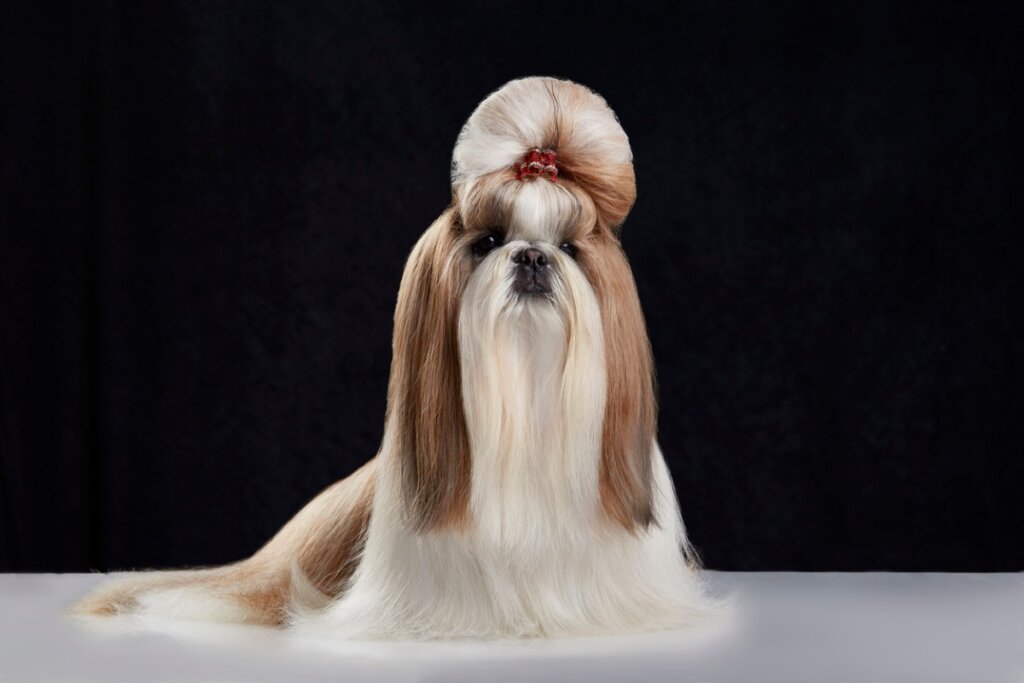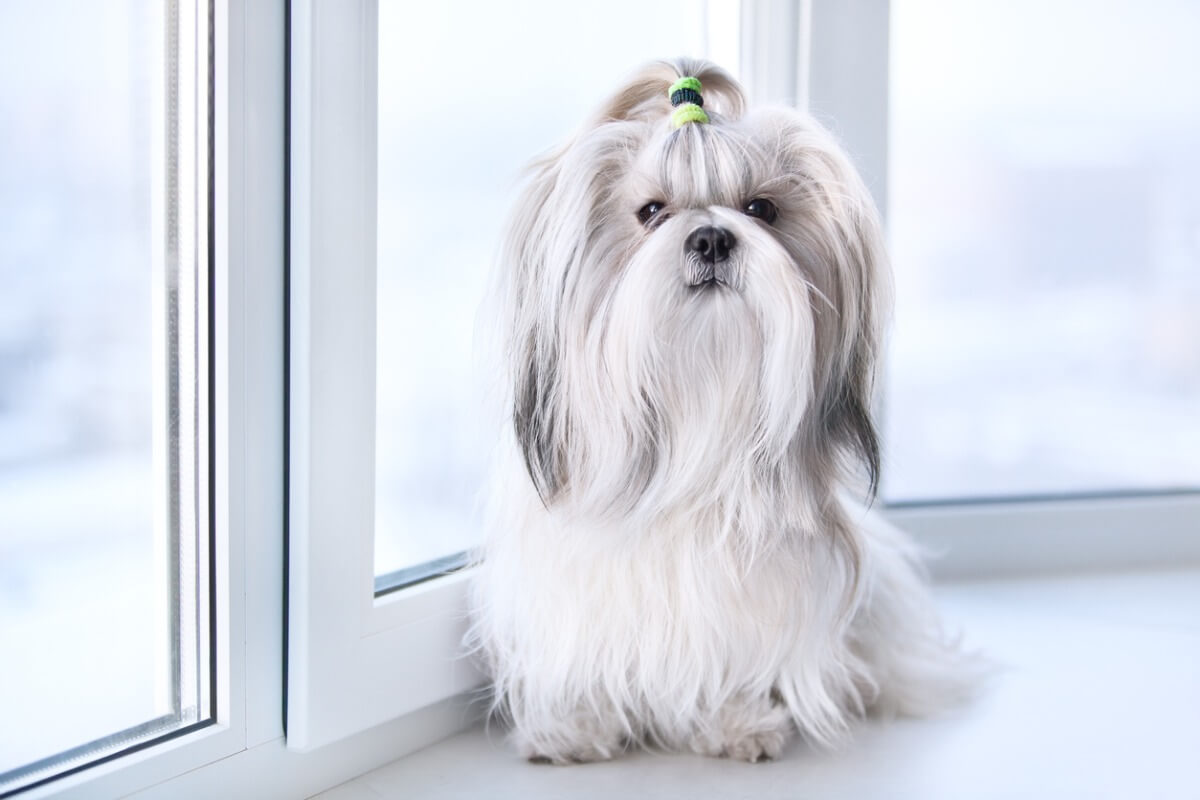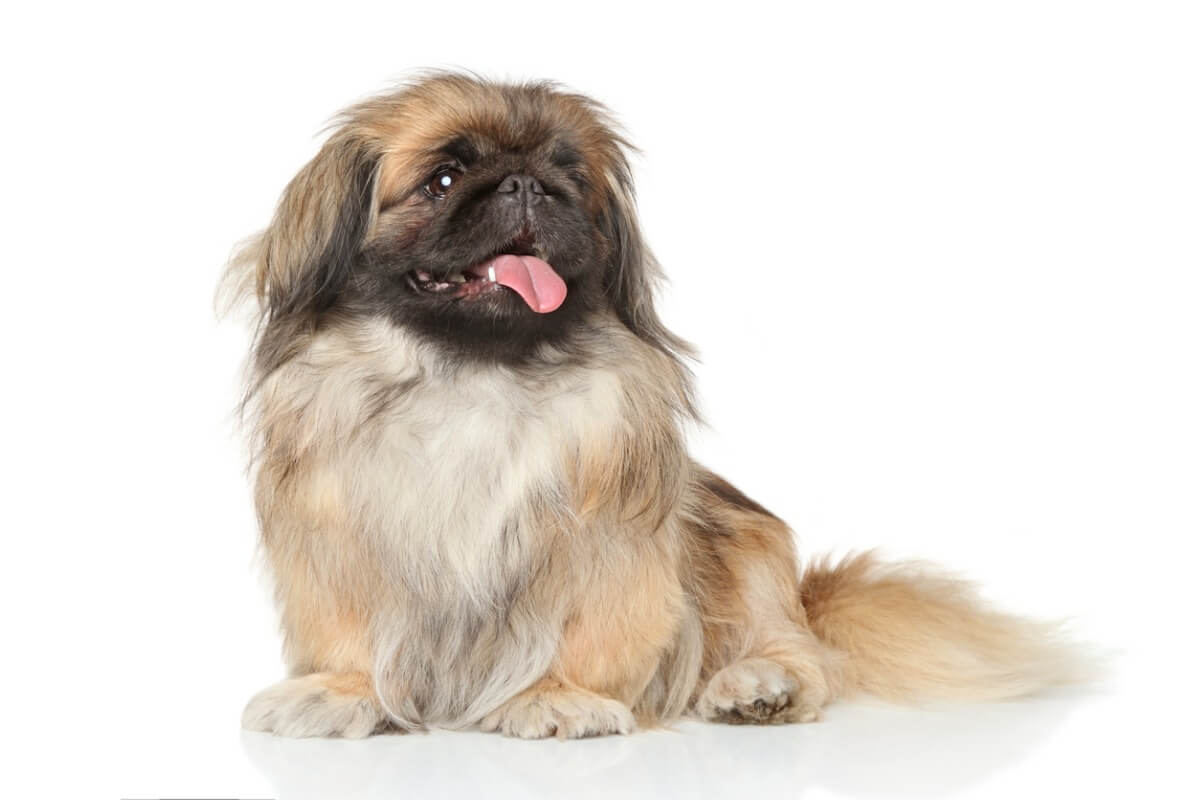The Differences Between a Pekingese and a Shih Tzu

Some dog breeds have such similar appearances that we can easily confuse them, and find it difficult to tell them apart. However, it’s always possible to find differences between one and the other in order to identify each dog correctly. In the following article, we’ll mention some differences between the Pekingese and the Shih Tzu, two dogs of oriental origin that are very similar at first sight.
In the following lines, we’ll show you both physical and behavioral characteristics that will help you to distinguish between the two breeds. In addition to this, you’ll learn some differences in how to look after their health. If you’re interested in learning more about these dogs (or you need to decide which one to choose to adopt), this information will help you.
Physical differences between the Pekingese and the Shih Tzu
The size and weight are the first differences between the Pekingese and the Shih Tzu. According to the Fédération Cynologique Internationale, the Shih Tzu reaches a height of 27 centimeters (just over 10 inches) at the withers, which means that it’s slightly larger than the Pekingese. The latter can measure from 15 to 23 centimeters (6 to 9 inches)
On the other hand, the ideal weight of the Shih Tzu is between 4.5 and 7.5 kilograms (10 to 16.5 pounds), while in the Pekingese this varies according to its sex. Males shouldn’t weigh any more than 5 kilograms (11 pounds), but females can weigh a little more (5.4 kilograms – 12 pounds).
In addition to the above, one of the most notable distinctions between these canines is their coat. In the case of the Pekingese, the hair is moderately long, straight, and thick. In addition, it doesn’t go beyond their shoulders and it’s a double coat. The Shih Tzu also has a thick coat, but it’s much smoother, longer, and thicker.

Different behavior
Both the Pekingese and the Shih Tzu are loyal dogs that need correct socialization to enhance their character, but these dogs also have differences in their behavior. For example, the Pekingese can develop into a great watchdog, while the Shih Tzu, despite being alert, prefers to be close to its owners.
Similarly, the Pekingese is affectionate and fearless and the Shih Tzu is more active, outgoing, and docile. Both dogs are intelligent and quite loyal, although it should be noted that their temperament and behavior also depend on the training that they receive from very young or when they first arrive at the home.
Differences in the care of the Pekingese and the Shih Tzu
As for care, the differences between the Pekingese and the Shih Tzu are related to physical activity and maintenance of their appearance. Although all dogs require walks and exercise, just how much is carried out varies according to the needs of the pet.
The Shih Tzu requires minimal exercise and short walks. In contrast, the Pekingese requires more walks and needs to be kept active through play and stimulation. In addition, it enjoys participating in sports.
Regarding the coat, both dogs need a good brushing to avoid knots and to keep their coat shiny. However, the Shih Tzu requires more attention and needs to have its coat brushed daily. In the case of the Pekingese, their fur can be maintained with one or two brushings per week to remove loose hair and prevent tangling.
Similarly, there are differences in the food requirements between these dogs, although the diet of your specific dog will always depend on many factors. Not only the breed, but also the size, age, and state of health will influence the food you choose for your four-legged friend.
In addition, it should be noted that both breeds tend to suffer from excess weight problems.
Pekinese and Shih Tzu health
Both the Pekinese and the Shih Tzu are brachycephalic dogs, which means that they have a condition that causes longitudinal shortening of the diameter of the skull. In other words, they have a short, flat muzzle, which can cause breathing difficulties and other digestive problems.
Despite having the same “flat face” characteristic, the life expectancy of the Pekingese and the Shih Tzu is different. According to the American Kennel Club, the life expectancy of a Pekingese is between 12 and 14 years, while that of a Shih Tzu is between 10 and 18 years. However, this will also depend on the lifestyle each one leads.

Although these dogs with abundant fur and tender faces look very similar, all the aspects mentioned above can help you distinguish one from the other. Now you know what details to look for when differentiating a Pekingese from a Shih Tzu, you’ll know which of these dogs could become your faithful companion.
All cited sources were thoroughly reviewed by our team to ensure their quality, reliability, currency, and validity. The bibliography of this article was considered reliable and of academic or scientific accuracy.
- SHIH TZU. Federación Cinológica Internacional. Recogido el 11 de octubre de 2021 de: http://www.fci.be/nomenclature/Standards/208g09-es.pdf
- Pekinés. American Kennel Club. Recogido el 11 de octubre de 2021 de: https://www.akc.org/dog-breeds/pekingese/
